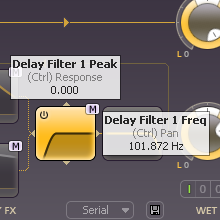
The new Arpeggiator, meanwhile, provides creative inspiration, with host sync, Groove/Legato, and Rate Offset controls, and the gamut of note value and order options.
#Sound design fabfilter twin 2 how to#
Needless to say, every FX parameter is available as a modulation target, so users can really bring them to life using Twin 3’s Envelope Generators/Followers, XLFOs, XY controllers, Sliders, and MIDI sources. In this tutorial, Dan Worrall explains how to use ring modulation to create bell sounds, and reverse-engineers a cool preset from the Best Of folder, to show. Twin 3 presents a more Zen landscape that you populate. For example, Twin 2 was visually a bit overwhelming because all the oscillators, filters and so on were always visible even if they weren’t being used.

Shape dynamics and apply saturation with Compressor and Drive effects create space and generate rhythmic echoes with Reverb and Delay and thicken and widen the sound with Chorus and Phaser. This brings Twin 3 much more in line with FabFilter’s mixing plugins from a user interface point of view, which is a good thing.

Twin 3 introduces a supercharged new FX section, comprising six processing modules for transforming and polishing signals. Twin 3’s filters have been doubled in number from two to four and similarly enhanced, with new vintage-style Bell, Shelf, and Notch types delivering characterful non-linear distortion, and the 6dB/octave slope option and Cutoff/Peak Offset knobs opening up even more sound design possibilities. Ever-changing parameters can make your music become more alive because an exact reoccurrence is very unlikely to happen.

Completely overhauled and featuring analog-modeled drift for subtle random pitch and phase fluctuation, as well as pulse width modulation, hard sync, and phase sync, Polyphony has been given a boost, too, with an upgraded maximum of 64 voices - double the 32 of Twin 2 - and the Per Oscillator polyphony mode, which steps through the oscillators with each incoming note. FabFilter Twin 2 offers very flexible modulation possibilities which make this plug-in capable of many sound design applications. It all starts at the oscillators, and Twin 3 adds another one for four total.


 0 kommentar(er)
0 kommentar(er)
